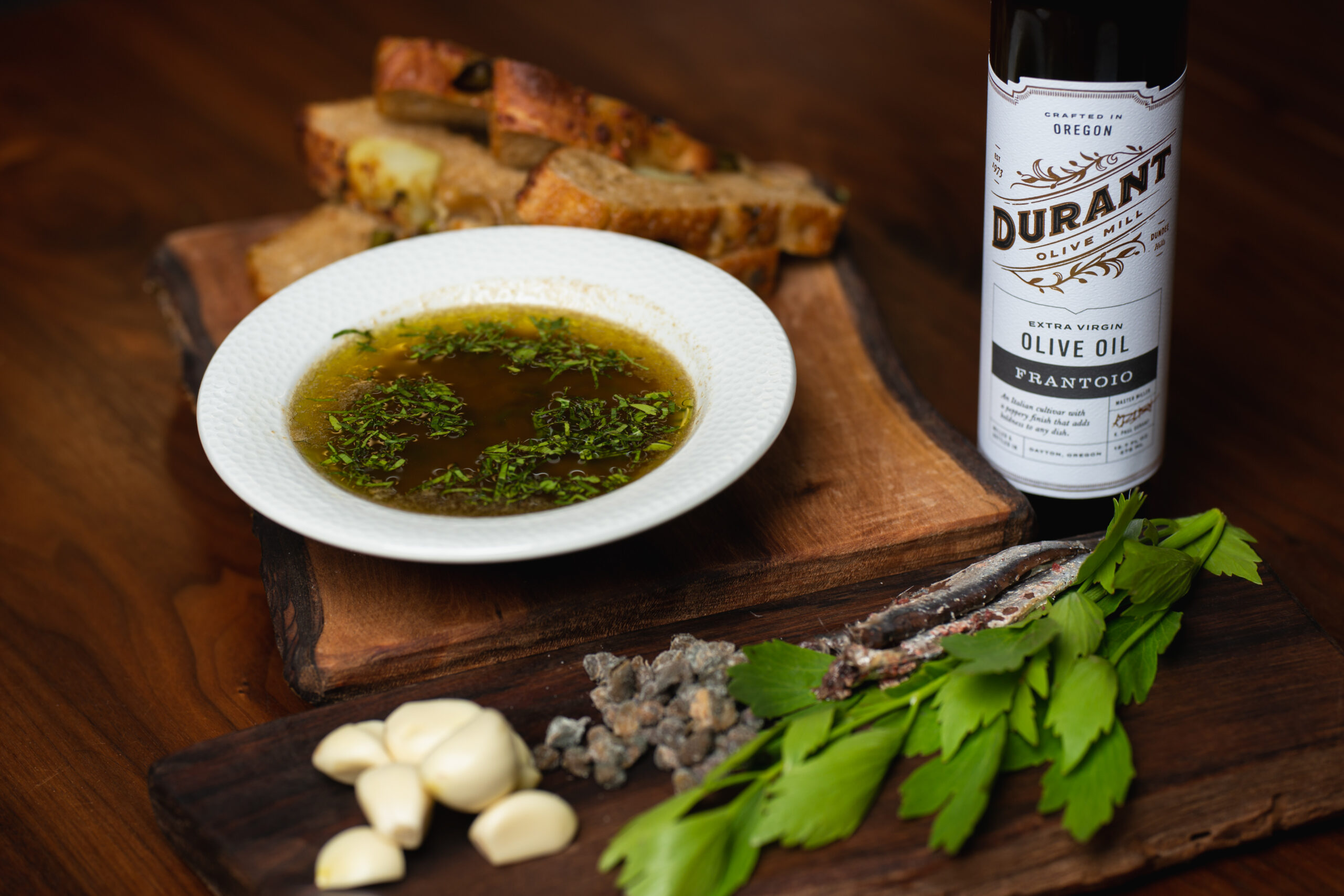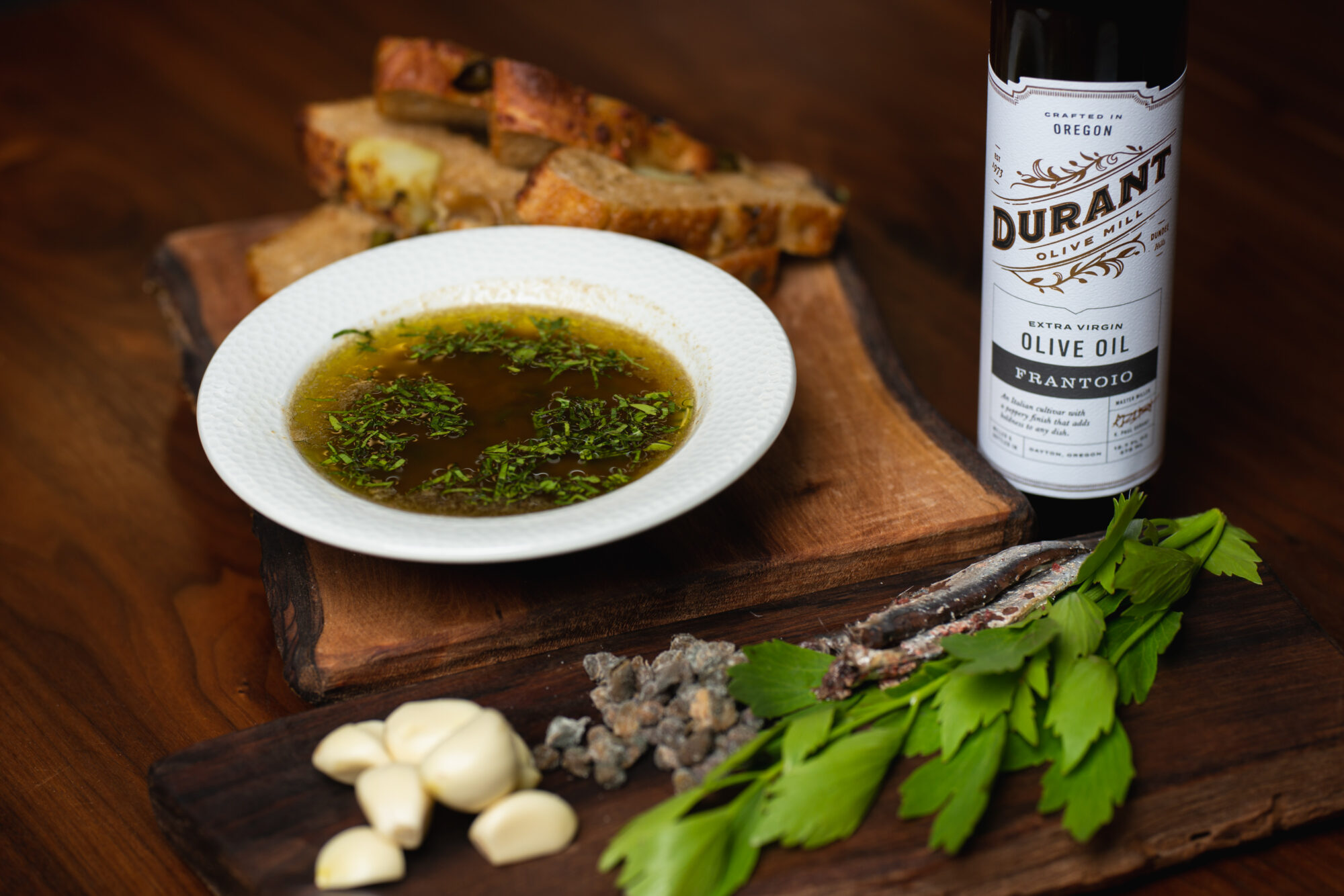
31 May Bagna Cauda / Tercet

Rinse the capers in running cold water to remove the salt, then soak them in cold water, about 10 minutes. Dry the capers on a towel. In a mortar and pestle, grind the capers and garlic to a fine paste using a small pinch of salt as an abrasive. Heat the heavy bottomed sauce pan on medium low heat and add the butter. When it is foaming but not browning, add the garlic and caper paste. Sauté until aromatic, stirring frequently so there is zero browning.
Meanwhile, pound the anchovies in the mortar until they are a fine paste. I find that doing the vegetables, then the fish produces better results, a finer paste. Add the anchovy to the pan and incorporate fully. When the aroma intensifies, add the olive oil and bring to a simmer. Once simmering lower the heat as low as it will go, so that the mixture is barely moving and cooking as slowly as possible. In the restaurant we put it in the hottest place in the kitchen with little to no direct heat. Ideally you are maintaining a cooking temperature of 140 degrees F or so.
In two hours the sauce will be good, in four hours it will be great, cooled and reheated the next day, or spread onto fresh ciabatta is revelatory. After four hours of very slow cook time the ingredients should be indistinguishable from each other. Add the zest of lemon and the chopped parsley. Add a couple turns of fresh cracked pepper and adjust seasoning with salt if necessary, often no added salt is needed.
Bagna Cauda, which translates to hot bath, is a condiment from Piedmont, Italy. Traditionally it is used as warm sauce to dip fresh or cooked vegetables into during a large celebratory meal. Almost like a non cheesy fondue. Fresh grilled or raw veggies dipped into the warm bath are amazing and perfect for a summer bbq. It’s an extremely flavorful condiment that can also be repurposed into a multitude of recipes. It can be turned into a salad dressing, used to marinate fish or chicken, spread on bread for amazing garlic bread, used to dress grilled clams, oysters or shrimp, or the base of a homemade pizza. It also keeps very well, and can be made days ahead of time. The quality of the olive oil really shines in this preparation. I’ve made this sauce on the side of a grill, on a fireplace hearth and in an oven set to warm. Although the smoke from live fire will add another layer of complexity to the finished product, the method used to heat and cook the Bagna really doesn’t matter. What’s important is that it cooks for as long as possible with zero browning.
